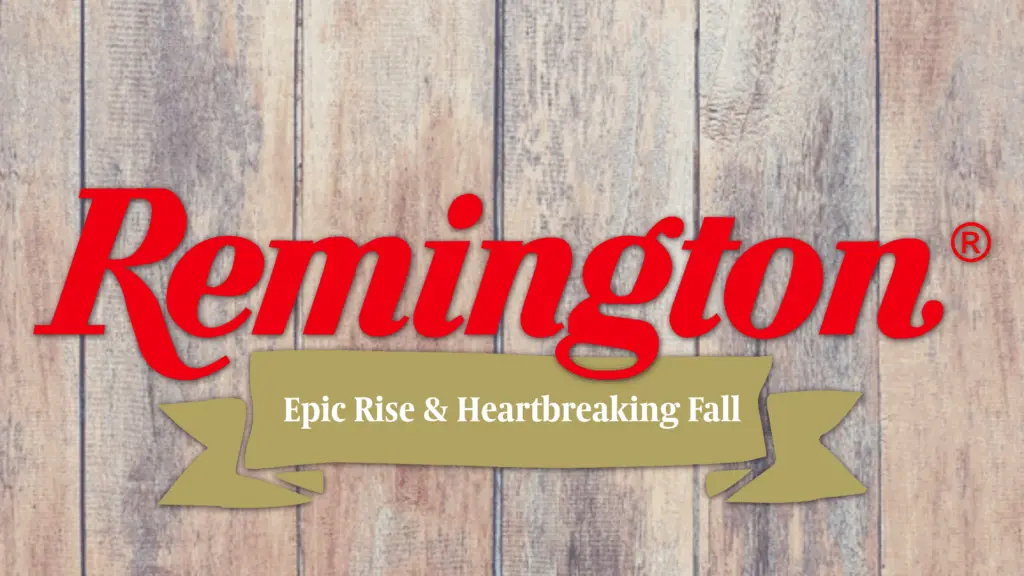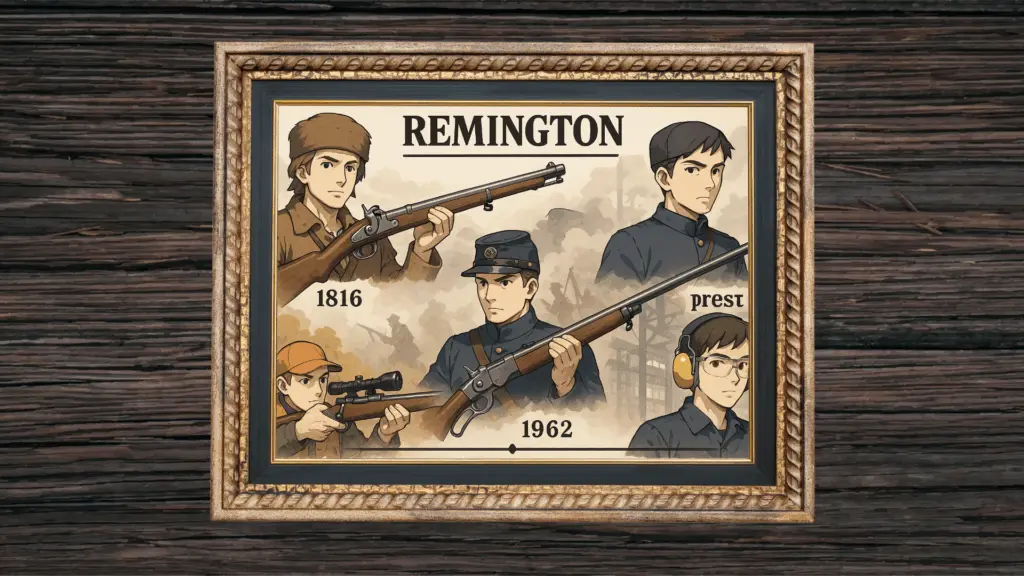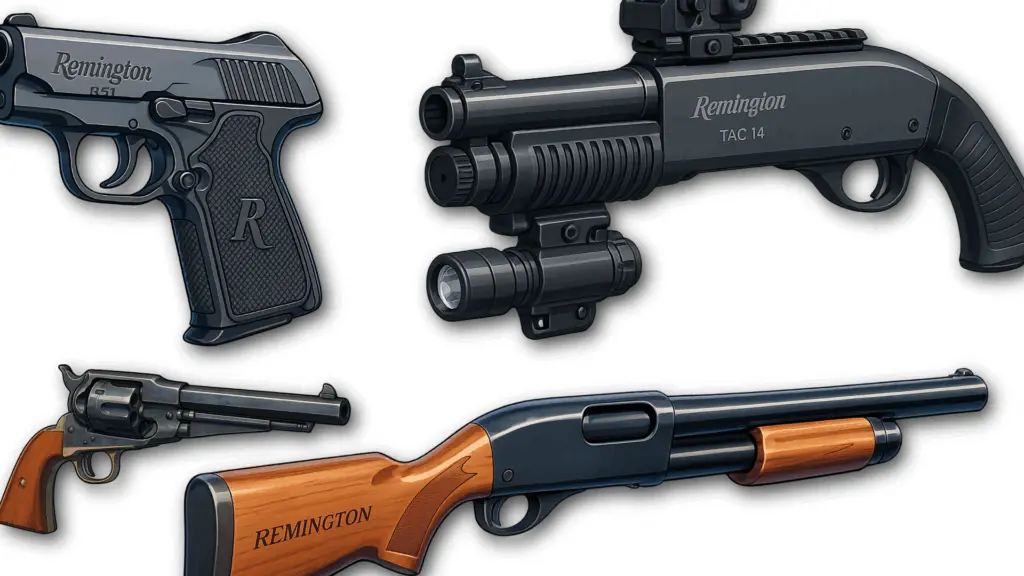
Few names in American firearms stir as much nostalgia—or heartbreak—as Remington. From
the deer woods to the battlefield, Remington was the name for generations. Their rifles built
marksmen, and shotguns filled freezers. Their ammo lit powder behind countless rounds fired
across every corner of the country. Remington brand legacy was thought to last forever, but sadly it like other legacy brands couldn’t keep up with modern demands.
But today? Remington is a shell of what it was—split apart, bought up, and barely recognizable.
So what the hell happened?
Let’s go back to where it started.

The Beginning: 1816 and a Young Man With a Flintlock
Eliphalet Remington II wanted a better gun for a local shooting competition. So he built
one—from scratch. That flintlock rifle turned heads, and the orders started rolling in.
By the mid-1800s, E. Remington & Sons was churning out rifles, muskets, and even revolvers
for the U.S. government. They became one of the biggest gunmakers in America, supplying
arms through the Civil War and into the industrial age.
Golden Era: 20th Century Dominance
By the 1900s, Remington was a juggernaut. They weren’t just making guns—they were
innovating:
● Model 700 (introduced 1962) – The bolt-action benchmark. Used by hunters, precision
shooters, and the U.S. military (M24, M40). Insanely accurate, customizable, and
everywhere.
● Model 870 (introduced 1950) – The best-selling pump shotgun in history. Durable,
affordable, and reliable enough for cops, duck blinds, and door breachers.
● Model 1100, 742, Nylon 66 – Semi-autos that brought hunting and sporting rifles into
the modern era.
● Remington Ammo – Produced millions of rounds annually, from .22LR to .300 Win
Mag.
They even dabbled in cutting-edge designs, like the XP-100 bolt-action pistol, and held strong
in the military/law enforcement scene.
Remington had it all—prestige, performance, and American heritage.

The Cracks Begin: Corporate Takeovers and Cost Cutting
Here’s where it starts to hurt.
In the early 2000s, Remington was absorbed into a giant conglomerate called Cerberus Capital
Management, under a firearm holding company ominously named Freedom Group.
And from there, it got ugly.
● Quality control nosedived.
● Long-trusted models started showing serious issues.
● The Model 700 trigger design came under legal fire for accidental discharges.
● They released duds like the R51 pistol, rushed to market and recalled.
● Multiple plant closures led to skilled labor loss and bad press.
They weren’t run by gun people anymore—they were run by bean counters.
The Sandy Hook Fallout
In 2012, a Bushmaster AR-15 (Bushmaster was one of Remington’s holdings) was used in the
Sandy Hook school shooting. The tragedy itself devastated the nation—but the legal
aftermath would help kill Remington.
They were sued—not for making a defective product—but for marketing tactics, like ads
showing the rifle as a “weapon of war” that “earned its stripes in battle.”
Whether you agree with the legal logic or not, the result was brutal:
● $73 million settlement
● Massive public pressure
● Even more financial instability
The Collapse: Bankruptcy and the End of an Era
By 2020, Remington had declared bankruptcy for the second time in two years.
It was over.
In the final breakup, the once-mighty Remington was carved up and sold off, piece by piece:
● Remington Ammunition – Bought by Vista Outdoor (same folks who own Federal, CCI,
etc.)
● Marlin Firearms – Bought by Ruger
● DPMS, Bushmaster, H&R, Parker, Tapco – Scattered to various buyers
● Remington Arms (rifles & shotguns) – Bought by Roundhill Group, a tiny investor
outfit trying to revive the brand
Today, the Remington name still exists—but it’s not Remington as it once was. The factories are
new. The people are different. And the quality? Still under scrutiny.
Legacy and Lessons
The fall of Remington hurts not because they failed—it hurts because they shouldn’t have.
They had the trust of millions, proven designs, had the name.
But they were mismanaged, milked for profit, and left to rot.
Still, their legacy lives on:
● Every Model 700 clone owes its lineage to that design.
● Every pump shotgun measures itself against the 870.
● And American gun culture? It’s written in Remington ink.
Final Shots Remington Brand Legacy
Remington’s rise was the story of American grit and innovation.
Its fall was a warning tale of greed and detachment.
The brand still breathes, but the heart of Remington—what it meant—is gone. And for many of
us, that loss is personal.
Because we didn’t just shoot Remingtons.
We grew up with them.
But while the soul may be bruised, hope isn’t dead. The new owners—small, quiet, and far
from corporate giants—have taken up the task of rebuilding from the ground up. There’s no
guarantee they’ll succeed. No promise the name will ever shine as it once did. But at least
someone is trying.
And if Remington is ever going to rise again—not as a brand, but as a legacy—it will be
because real shooters, real craftsmen, and real Americans decided it mattered.






